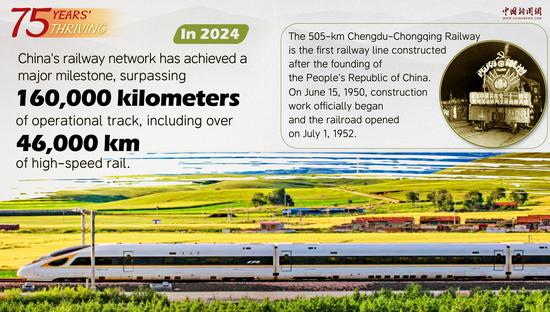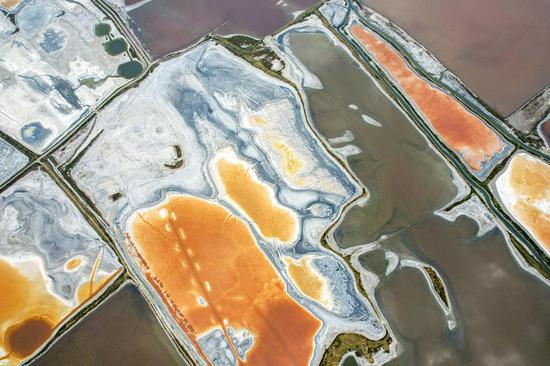Workers at the Xinfeng National Atmosphere Background Station are not allowed to cook their meals on-site. Rather, any food they need must be delivered to the station from the foot of Yunji Mountain, which is located in Xinfeng county in Shaoguan, Guangdong province.
"We are not allowed to make fires for cooking at the station, as we need to capture the true essence of the atmosphere to the fullest extent possible," said Chen Jianwen, Party chief of Xinfeng Meteorological Service Bureau.
The station is primarily used to observe atmospheric components closely related to weather, climate, environment and health, including greenhouse gases, aerosols and reactive gases.
The atmospheric observation data collected at the station has provided systematic, continuous and reliable support for research on climate and environmental changes in South China, helping to drive socioeconomic development in the area and meet China's 'dual carbon' goals — to reach its carbon emissions peak by 2030 and achieve carbon neutrality by 2060 — according to Chen.
Selecting the site for the atmospheric background station was very challenging, Chen said.
"Unlike typical ecological monitoring stations, the atmospheric background station observes atmospheric components that must be relatively stable, well-mixed and far from human activities and pollution sources," the Party chief said.
As the eighth national atmospheric background station in the country and the only one in South China, the Xinfeng station began trial operations in October last year, and has since implemented a comprehensive and standardized observation system.
"The choice of this location on Yunji Mountain was mainly due to the superior natural environment and climatic conditions, with no industrial pollution in the surrounding area and minimal human interference, providing strong guarantees for the observation of atmospheric components," Chen said.
Yunji Mountain, with an altitude of about 1,434 meters, lies on the northern edge of the Tropic of Cancer, where the southern sea breeze and northern air currents frequently converge.
Due to the unique nature of the observation targets, the technical methods and equipment used at the station differ from those at general observation stations, according to Yang Tushi, assistant researcher from the Guangzhou Tropical Oceanographic Meteorological Research Institute of the China Meteorological Administration.
The station has a variety of high-tech equipment, including reactive gas online analyzers that are primarily used for taking real-time measurements of the concentrations of various reactive gases in the atmosphere such as nitrogen oxides and ozone.
"By studying the chemical behavior and interactions of reactive gases in the atmosphere, and identifying and analyzing atmospheric pollution sources, valuable data support can be provided for the real-time monitoring of air quality by ecological and environmental authorities, as well as for the formulation and implementation of environmental policies," Yang said.
China will continue to promote the simultaneous testing, construction and application of 10 new stations to strengthen the national atmospheric background observation network, according to the researcher.
In addition to the establishment of atmospheric background stations, meteorological authorities in Guangdong will optimize meteorological services to help boost local socioeconomic development, focusing more on meteorological disaster prevention and reduction, ecological civilization construction, ecotourism industry development and marine meteorological services.
In Yangjiang, a coastal city in western Guangdong, a meteorological observation station has been built at sea, supporting the nation's disaster prevention efforts.
Data from the station can be used to aid the construction of smart wind farms, maritime traffic management and rescue operations, according to the local meteorological service authorities.

















































 京公网安备 11010202009201号
京公网安备 11010202009201号